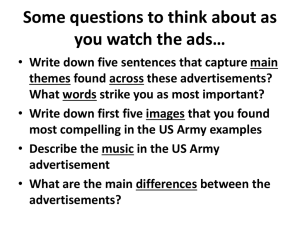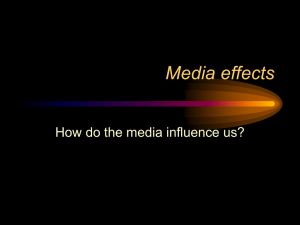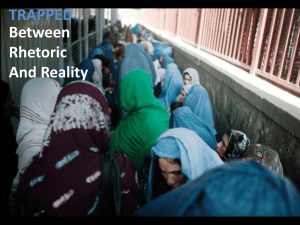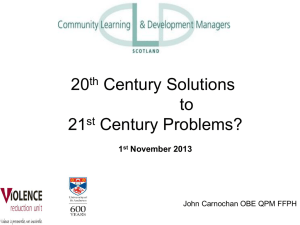File
advertisement
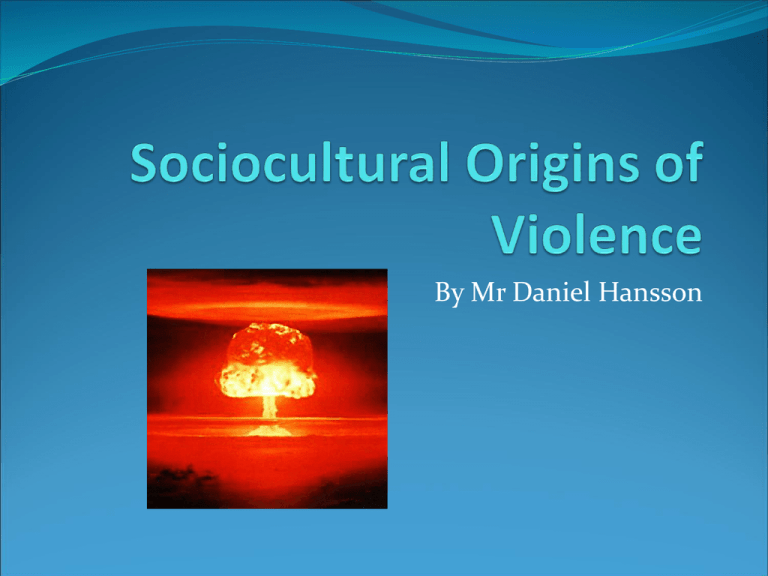
By Mr Daniel Hansson Questions for Discussion 1. Is violence ever justified? 2. How old do you think the youngest murderer ever 3. 4. 5. 6. 7. 8. was? Give explanations of terrorism. What do you think are the reasons for school shootings? Will there ever be a nuclear war? Are humans less or more violent than we used to be? Why does violence sell? What is a pecking order? Definition of Violence Violence: An aggressive act in which the perpetrator abuses individuals indirectly or directly Examples of violence: Murder, bullying, war, genocide, domestic violence, suicide Sociocultural Explanations of Violence Cultural norms Social learning theory Agency theory Cultural Norms Some cultures have norms of violence, e.g. the culture of honor in the Southern United States Culture of honor: A cultural norm where people need to maintain their reputation by not accepting improper conduct by others, such as insults. These cultures encourage retribution and toughness. Cohen and Nisbett (1995): College students from the southern and northern part of the United States were insulted by a confederate. Students who had grown up in the southern United States were more upset (had a higher rise in cortisol levels) and were more likely to engage in aggressive and dominant behavior. Social Learning Theory People can learn antisocial behavior through observational learning (e.g. Bandura et al., 1961) Eron (1986): Found a positive correlation between number of hours of violence watched on television at the age of 8 and the level of aggression they demonstrated as teenagers, as well as the number of criminal acts as adults Charlton et al. (1999): The introduction of television in St Helena in 1995 did not increase the observed aggression in primary school children. Agency Theory Milgram argues that people may enter an “agentic state” where they choose not to take responsibility of their actions and become the tool of an authority. This agentic state may lead to violent behavior. This is a situational approach Examples: Milgram (1963), My Lai massacre Evaluation Generalisability (e.g. Charlton, 1999) Correlation, not causation (e.g. Eron 1986) Dispositional factors of violence( e.g. serotonin, testosterone, prefrontal lobe damage, psychopathy) Ecological validity issue (e.g. Milgram 1963) Has been replicated, use of controls (Milgram ,1963; Cohen & Nisbett, 1995)






